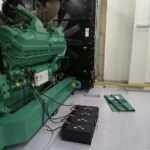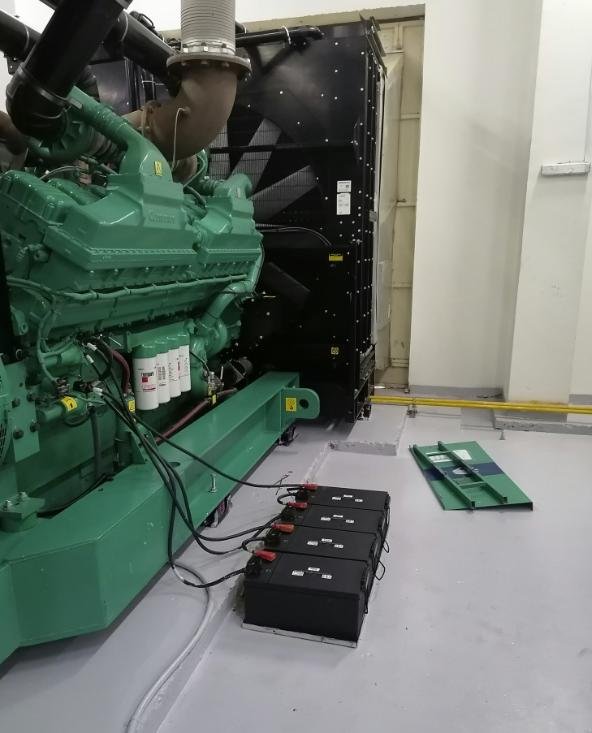Introduction to 4000 Watt Generators
A 4000-watt generator is a portable power source designed to provide electricity in situations where access to a utility power grid is limited or non-existent. Essentially, a generator converts mechanical energy into electrical energy, allowing users to power various electrical devices. The wattage rating of a generator, such as 4000 watts, indicates the maximum amount of electrical power it can produce at any given moment. Understanding this rating is crucial for determining what devices can be utilized simultaneously without exceeding the generator’s capacity.
Generators are commonly employed in various contexts, including camping trips, outdoor events, construction sites, and emergency backup situations during power outages. A 4000-watt generator, in particular, is suitable for powering small to medium-sized appliances, tools, and equipment. For example, it can efficiently handle devices such as refrigerators, microwaves, power tools, and lighting systems, making it a versatile option for both residential and commercial applications.
The significance of the wattage in a generator cannot be understated. Higher wattage signifies a greater potential for powering more devices or appliances simultaneously. When considering a 4000-watt generator, it is essential to account for both running watts—the continuous power a generator can provide—and starting watts, which are often required for devices with motors or compressors. In doing so, users can ensure the generator meets their specific power needs without risk of overload.
In the following sections, we will further explore the capabilities of 4000-watt generators, focusing on their efficiency and practical applications, ultimately providing insight into how this power rating can be effectively utilized. This exploration will be instrumental for anyone considering the purchase or use of such a generator in various scenarios.
Understanding Power Ratings: Watts, Amps, and Volts
To effectively utilize a generator, it is essential to understand the fundamental power ratings, namely watts, amps, and volts. Each of these units represents a distinct aspect of electrical measurements, and together they provide a comprehensive view of power consumption and generation. The watt (W) is the primary unit of measurement for electrical power, representing the rate at which energy is used. In simple terms, it can be described as the product of volts and amps.
Amperes (or amps) measure the flow of electric current, while volts represent the electric potential or the force that drives the current through a circuit. The relationship among these units is encapsulated in the formula: Watts = Volts x Amps. This equation is crucial for anyone looking to maximize the efficiency and effectiveness of a generator, particularly a 4000 watt generator, which can handle a specific load based on these calculations.
It is vital to consider both the voltage and the amperage of the devices that will be connected to a generator. For instance, if an appliance requires 2000 watts of power and operates at 120 volts, its amperage can be calculated using the rearranged formula: Amps = Watts ÷ Volts. In this case, the appliance would draw approximately 16.67 amps. By understanding this interplay among watts, amps, and volts, users can determine the appropriate combination of devices that a generator can reliably power.
Furthermore, recognizing the importance of these measurements ensures users avoid overloading their generators. Each generator, including those with a 4000 watt capacity, will have specific ratings for continuous and surge watts, which dictate how much power can be used safely over time. This knowledge is not just helpful but necessary for effective generator management and safety.
Common Appliances and Their Power Requirements
Understanding the power requirements of common household appliances is crucial when determining whether a 4000 watt generator can sufficiently support them. The power consumption of appliances varies significantly, and knowing these figures aids in effective energy management during outages or outdoor activities.
Refrigerators are essential household appliances, typically requiring between 100 to 800 watts, depending on their size and energy efficiency. Most modern refrigerators average around 600 watts, making them manageable for a 4000 watt generator. However, the startup power of a refrigerator can momentarily spike to 1200 watts, so it is vital to account for this when connecting to a generator.
Microwaves also have variable power requirements, commonly ranging from 600 to 1200 watts. To operate a standard microwave effectively, one should ensure that the total power load on the generator remains within limits, particularly considering the startup surge typical of such appliances.
Space heaters are another critical consideration, especially during winter months. On average, a space heater requires about 1500 watts, which exceeds the output capacity of a 4000 watt generator if used alone. Nevertheless, some portable electric heaters may operate on lower settings, allowing for potential compatibility depending on the generator’s load capacity.
Power tools, frequently used for outdoor projects or home repairs, generally require between 500 to 1500 watts. Tools like drills and saws can often fit within the operational limits of a 4000 watt generator. However, careful management of simultaneous usage is needed to avoid overloading the generator.
In summary, a 4000 watt generator can manage various household appliances; however, understanding their individual power requirements is vital for efficient use. By knowing the wattage of each appliance, users can maximize the generator’s potential while ensuring reliable operation.
Surge vs. Running Watts: What You Need to Know
Understanding the distinction between surge watts and running watts is crucial when evaluating what a 4000 watt generator can handle. Surge watts, also known as starting watts, represent the initial burst of power required to start an electrical appliance. This power is often greater than the continuous operating power, or running watts, needed to keep the appliance functioning after it has started. This difference is particularly significant for devices with electric motors or compressors, which require a higher wattage when starting up.
For example, a refrigerator may require around 1000 running watts to operate, but its surge wattage might reach as high as 2000 watts during startup. This means that when using a 4000 watt generator, one must account for the higher starting requirements of various appliances to avoid overloading the generator. A generator capable of producing 4000 watts can theoretically power several devices simultaneously, but the combined surge watts of all appliances must not exceed this threshold at any given time.
When planning for energy use, one should prioritize understanding the power requirements of essential devices. Items like air conditioners, power tools, and water pumps often exhibit high surge wattage and can necessitate careful consideration during operation. In some cases, staggering the operation of these devices can help to mitigate the risk of overloading the generator.
In summary, when assessing the capacity of a 4000 watt generator, it is essential to differentiate between running watts and surge watts. Not only does this knowledge aid in selecting appropriate devices but also enhances the overall efficiency and safety of using a generator for various applications.
Calculating the Load Capacity of a 4000 Watt Generator
When utilizing a 4000 watt generator, it is imperative to accurately calculate the load capacity to ensure safe and effective operation. This process begins with a comprehensive assessment of all appliances and devices intended for use with the generator. The load, expressed in watts, of each device must be determined. Most consumer appliances indicate their wattage on a label located on the back or bottom, or in the owner’s manual. In the absence of this information, online resources can often provide the necessary specifications.
Once the wattages are identified, the next step is to create a cumulative total of the wattage for all appliances planned for simultaneous use. This includes assessing both continuous and starting wattages, particularly for items with motors, such as refrigerators and air conditioners. Starting wattage can be significantly higher than continuous wattage, meaning it is essential to consider these variations when calculating total load. For example, a refrigerator may consume 800 watts while running but could require up to 2000 watts to start.
After obtaining the total wattage, it is crucial to compare this figure to the generator’s output capacity. A 4000 watt generator can supply up to 4000 watts at maximum output, but it is advisable to operate at approximately 75% of the total wattage for optimal performance and generator longevity. Therefore, keeping the total load at or below 3000 watts is recommended. This buffer helps accommodate any fluctuations in appliance performance and ensures the generator does not become overloaded.
Lastly, safety cannot be overlooked. When connecting multiple devices, use heavy-duty extension cords that can handle the load, and ensure the generator is placed outdoors to prevent carbon monoxide buildup. This systematic approach to calculating the load capacity of a 4000 watt generator not only enhances safety but also maximizes efficiency. By following these guidelines, users can effectively manage their power needs while safeguarding their equipment and personal wellbeing.
Real-World Applications: When and Where to Use a 4000 Watt Generator
A 4000 watt generator serves as a versatile power source in various real-world scenarios, providing essential energy for multiple applications. One of the most common uses is during power outages, where a generator can offer a reliable supply of electricity to maintain indoor comfort. Homeowners can sustain essential appliances such as refrigerators, sump pumps, and lighting systems for several hours, ensuring that food remains fresh and safety is preserved during short-term outages.
Another popular application is camping. Many outdoor enthusiasts utilize a 4000 watt generator to power recreational vehicles (RVs) or tents equipped with electrical appliances. This generator can easily handle the power needs of devices such as heaters, fans, and cooking equipment, creating a more comfortable environment away from home. Additionally, the ability to charge electronic devices such as smartphones and tablets enhances the overall camping experience, allowing for communication and entertainment.
In the context of construction work, a 4000 watt generator proves invaluable. Construction sites often require power to operate tools and equipment, especially in areas where electricity is unavailable. The generator can run devices like saws, drills, and even temporary lighting, enabling workers to maintain productivity regardless of their location. Its portability and adequate wattage make it suitable for both small-scale projects and larger construction endeavors, proving essential for contractors seeking to minimize downtime.
Lastly, event organizers can benefit significantly from a 4000 watt generator. Whether it is a wedding, festival, or community event, the reliable supply of electricity for sound systems, lighting, and catering equipment can make or break an occasion. By effectively utilizing a generator, planners can ensure a seamless experience for attendees.
Comparison with Other Generator Sizes
Generators serve various purposes, and their capacity is measured in watts, providing insight into the electrical load they can handle. Understanding how a 4000 watt generator compares to other sizes, such as 2000 and 6000 watt models, is crucial for making informed decisions when selecting the right generator for specific needs.
A 2000 watt generator is suitable for light usage, such as powering small appliances, tools, and electronics. It typically only provides enough power for minimal needs, making it an excellent choice for recreational activities like camping or tailgating. However, its limitations become evident when powering larger appliances or multiple devices simultaneously, which a 4000 watt generator can handle with ease.
On the other end of the spectrum, a 6000 watt generator caters to more extensive requirements, such as running several high-demand appliances, including HVAC systems, refrigerators, and power tools simultaneously. Although this capacity allows it to cover more significant electrical needs, the downsides include increased weight, higher fuel consumption, and greater noise levels. Additionally, the cost of a 6000 watt generator typically exceeds that of a 4000 watt generator, making it less appealing for those who do not need the extra power.
The 4000 watt generator thus occupies a middle ground, making it an ideal option for those who need to power several mid-sized appliances without the bulk and expense associated with larger models. It can efficiently handle household essentials in the event of a power outage, such as refrigerators and lights, while still being portable enough for outdoor use or job sites. In summation, the choice between a 2000, 4000, or 6000 watt generator hinges on the user’s specific power requirements, underscoring the importance of assessing wattage needs to select the most suitable generator.
Maintenance Tips for Your 4000 Watt Generator
Proper maintenance is essential for maximizing the efficiency and longevity of your 4000 watt generator. By adhering to a comprehensive maintenance routine, you can ensure that your generator operates smoothly whenever you need it. Regular checks should begin with inspecting the fuel system, including the fuel lines and filters, to prevent clogs and ensure a steady flow of fuel to the engine. Keeping fuel clean and fresh is vital, as stale fuel can hinder performance. It is advisable to use fuel stabilizers to maintain fuel quality over time.
Storage is another critical aspect to consider. If you plan to store your generator for an extended period, be sure to drain the fuel tank and run the generator until it consumes the remaining fuel. This practice prevents the fuel from deteriorating inside the tank and avoids potential clogs in the carburetor. Additionally, store your generator in a dry, clean environment to protect it from moisture and dust accumulation, which can impact its reliability.
Regular oil changes are fundamental for maintaining the health of your generator’s engine. Check the oil level and condition frequently, especially after heavy use. It’s generally recommended to change the oil every 50 to 100 hours of operation, or at least once a season, to ensure optimal lubrication and prevent engine wear. Furthermore, monitor the air filter and replace it as necessary to ensure adequate airflow for combustion, which is crucial for maintaining performance.
Lastly, being proactive about troubleshooting common issues can help you avoid major repairs down the line. Familiarize yourself with the generator’s manual and pay attention to unusual noises or performance drops. Addressing problems promptly can extend the lifespan of your 4000 watt generator and keep it ready for any situation.
Conclusion: Assessing Your Generator Needs
In evaluating your generator needs, it is essential to reflect on the various factors that influence your power requirements. A 4000 watt generator is a versatile choice, capable of handling a range of appliances and tools, making it suitable for both emergency backup power and outdoor recreational use. However, to fully maximize its potential, you must first assess your specific power demands.
Begin by compiling a list of the devices you intend to power. Consider their wattage ratings, as this will help you determine whether a 4000 watt generator can efficiently support your needs. Appliances such as refrigerators, lights, and power tools each have variable wattage requirements, and understanding these figures will allow you to prioritize devices in the event of a power outage. For example, essential items like medical equipment or heating solutions may take precedence over less critical appliances.
Furthermore, it is crucial to think about the duration for which you require the generator’s output. If your power needs are sporadic or temporary, the 4000 watt model may suffice. Conversely, for prolonged usage scenarios, you may need to consider an upgrade to a more powerful generator. Additionally, anticipate potential future needs based on seasonal demands, such as increased cooling during summer months or additional heating sources in winter.
Ultimately, assessing your generator needs is a proactive process. By taking the time to analyze your power requirements now, you will be better equipped to make informed decisions when selecting a generator. This preparation not only ensures you choose the right generator but also facilitates smoother operations during instances requiring backup power. Understanding these dynamics empowers you to navigate your generator options effectively.






